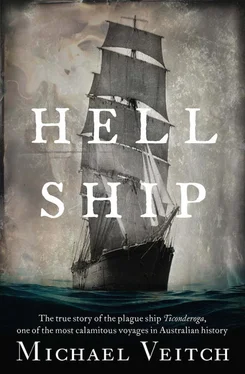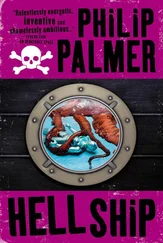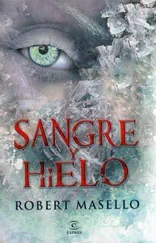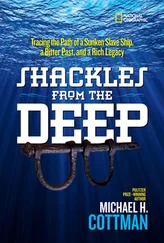In 1849, Prime Minister Lord John Russell decided to move with the times and, despite howling protests from virtually every member of the House of Lords—not to mention the entire British shipbuilding industry—he pledged to embrace the gods of free trade and release his seafarers from two centuries of protection, just as his predecessor Robert Peel had done with the Corn Laws in 1846. The shock, when it came, was palpable. Suddenly, in 1850, the first tea of the season was brought to London by the American clipper the Orient , which tied up to London’s East India Dock in 1850 to be greeted by a stunned crowd of locals who had never seen any vessel quite like it.
For 30 years from the mid-1840s until the advent of steam, the clippers rode the oceans as the true thoroughbreds of the Age of Sail. They were long, sleek and streamlined, riding low in the water and with their extra masts throwing up acres of sail to harness the wind. Some of the larger ships carried more than 30 individual sails with exotic names like moonrakers, royals and skysails. In conditions where other ships would shorten sail, the clippers would put on more and still more, heeling over until their booms and lee rails skimmed the surface of the water as it raced by at 10, 15 and even 20 knots or more. Their forecastles and other deck structures were trimmed down and configured to the centre of the ship to achieve the utmost balance.
Unlike their predecessors, which crashed their way doggedly through the waves like a battering ram, the clippers’ elongated bows sliced an effortless passage, leaving barely a wake behind them, the water seeming to part willingly before the progress of these graceful queens of the oceans.
Their genesis was in the small, fast raiders of the primarily maritime War of 1812 between Britain and the United States. Speedy little brigs, brigantines, fore-and-aft and topsail schooners, none bigger than 200 tons, would swarm out of Baltimore and other Atlantic harbours to harry the plodding vessels of the Royal Navy—which, in their exasperation, declared that the American sailors must have some ‘unlawful dealings with the great enemy of mankind for the malignant pleasure of annoying the English’. [1] H. La Grange and J. La Grange, 1936, Clipper Ships of America and Great Britain 1833–1869 , London: G.P. Putnam’s Sons, p. 29
They were made for speed and, unlike the traditional European vessels with their barge-like ‘upside-down bell-shaped’ bows and ‘cod head and mackerel-tail’ hull, they traded their space for the ability to transport a smaller cargo across the world in record times. Initially, that cargo was tea.
In 1843, a brilliant naval architect and ship design theorist named John Willis Griffiths was given a chance to put his academic ideas into practice by a New York-to-China trading firm, Howland & Aspinwall, which took the gamble of commissioning his 750-ton Rainbow , a ship so revolutionary that the maritime establishment declared it unsafe to sail, that her construction was ‘contrary to the laws of nature’ [2] A. H. Clark, 1912, Early Clipper Ships, 1842–1848 , New York: GP Putnam’s Sons, pp. 65–6
and that she would never return from her maiden voyage. Instead, the Rainbow achieved remarkable average speeds of 14 knots and set a new record for the return trip from New York to Canton of three months, bringing back the first of the new season’s tea chests for the highly competitive American market to the delight of the wealthy society ladies of New York and Washington.
In 1846, Griffiths built the even more remarkable Sea Witch , which stunned the world when, under the command of another of the great characters of the Age of Sail, ‘Bully Bob’ Waterman, she arrived from Hong Kong after just 77 days at sea, her holds bursting with the new season’s tea. At this time, a conventional cargo vessel could be expected to complete the same trip in no less than 160 days. [3] Mundle, 2016, p. 15
Two years later, in March 1849, ‘Bully Bob’, who had in fact worked with Griffiths on the sail design of the ship, achieved another feat by appearing unscheduled as a fast-moving speck on the horizon approaching New York harbour. When curious telescopes revealed that it was Sea Witch under full sail, just 74 days out of Hong Kong, the city went into raptures. Bully Bob had beaten his own record of two years earlier by three whole days. It is a feat that still stands today—unbeaten by any ship under sail more than a century and a half later.
For three decades, the clippers ruled the world’s oceans, and as the demand for speed grew, shipyards up and down the east coast of America became alive to their construction—as described romantically in one of the classic accounts of the sailing age, Clipper Ships of America and Great Britain:
The hammer notes of ten thousand men rang from the shipyards sprawled along New York’s East River, and up and down the north Atlantic coast town after town hummed and boomed with industry. Man seemed to rival Nature in a perfect orgy of inspired invention and turned out sleek thoroughbred after sleek thoroughbred, whose long white arms stretched outward to embrace the breeze and draw into themselves the very essence of moving, pulsing life. Captains, hanging up new records, were mobbed and feted and idolized. [4] La Grange and La Grange, 1936, p. 36
The word ‘clipper’ derived from the antiquated ‘clip’, meaning to move quickly, the most salient response from those first bearing witness to the speed of these new ships. They were given suitably romantic names such as Flying Cloud, Ariel, Lightning, Sovereign of the Seas and, one of the greatest of all, the 1534-ton Donald McKay-designed Stag Hound , which on one voyage, despite being partly dis-masted in a storm, still managed to break the record for the run from New York to San Francisco around Cape Horn, then one of the longest in the world. Initially tasked with whisking tea and other cargoes around the globe, it was the discovery of gold that ushered in the true heyday of the clippers, first in California then, in the early 1850s, Australia. Now the ships’ most lucrative cargo would be people, both well-heeled passengers paying their own way to seek fortune and adventure and those more desperate souls being assisted by their government to start a new life in a new land. One group of those less advantaged people would make the journey in the Ticonderoga.
She was built in New York in 1849 by Perrine, Patterson & Stack, at their yard at the bottom of North Second Street, Williamsburg, just across the East River from Manhattan. [1] Knoblock, 2014, p. 342
The company had been established a few years previously by a former sea captain, William Perrine, his partner Ariel Patterson and a Canadian from Quebec, Thomas Stack. Although the company would be broken up by 1853, it built six ships in total, the Ticonderoga being one of their larger vessels, although the John Stuart, built in 1851, hit the water at a whopping 1654 tons. [2] Knoblock, 2014, p. 342
Her initial owners were three New York brothers, Henry, William and John Harbeck, who began as a small company of merchants then store owners, stockbrokers and eventually successful shipowners. In all, they commissioned and owned three clippers, the Ticonderoga being named after the fort in Essex County, New York State, situated on a strategic spit of land between Lake George and Lake Champlain where a great battle had taken place in July 1758 during the Seven Years War between the British and French. According to sources, the word itself is Iroquois, meaning either the sound of flowing water, the meeting of two waters, or even the land between two waters. By whichever definition one chooses, the word, when spoken gently, seems to capture the gentle essence of a tumbling stream. There was nothing gentle, however, about the Battle of Ticonderoga, one of the darkest moments of the famous Scots regiment the Black Watch, which was almost wiped out attempting to take a fort from the resilient French.
Читать дальше












